Do you want EASY vegetables to grow in raised garden beds?
Do you want a garden, but don’t have the time, energy, or money for it?
Based on personal experience, scientific studies, and extensive research, I have created a list of 20 BEST Vegetables to Grow in a Raised Garden Bed.
The goal of this article is to provide you with the Easiest Vegetables to Grow.
And scroll down to the bottom for answers to frequently answered questions.
20 BEST Vegetables to Grow in Raised Garden Beds
Below, you will find the 20 BEST Vegetables to Grow in Raised Garden Beds.
You’ll notice squash, cucumbers, sweet corn doesn’t make the list. You can grow them in raised garden beds, but it takes too much work and space to be considered easy.
I also recommend purchasing your vegetable plants from Amazon.
1. Spinach
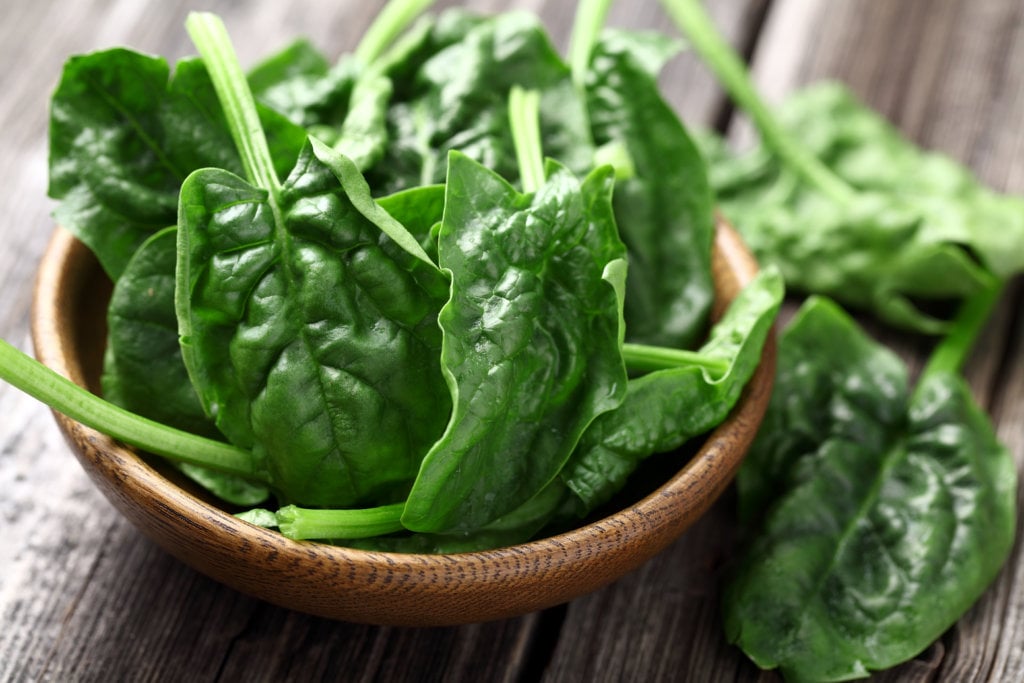
Spinach is a nutritious vegetable that is grown in both cold and warm weather. It contains high amounts of vitamin B6, B9, C, and Folic Acid.
You can plant it as early as spring and as late as early fall. This is because raised garden beds will generally protect it from frost.
- When to Plant: Immediately after last spring frost. A second planting in Early Fall
- How to Grow it: Plant 4-6 inches deep. Plant 6-8 inches apart.
- Watering Needs: Water Immediately after planting and then twice a week for 15 seconds.
- Where to place it: Partial-Sun
- Life Cycle: Annual Plant
- When to Harvest: Slowly pick 30 days after planting
2. Lettuce
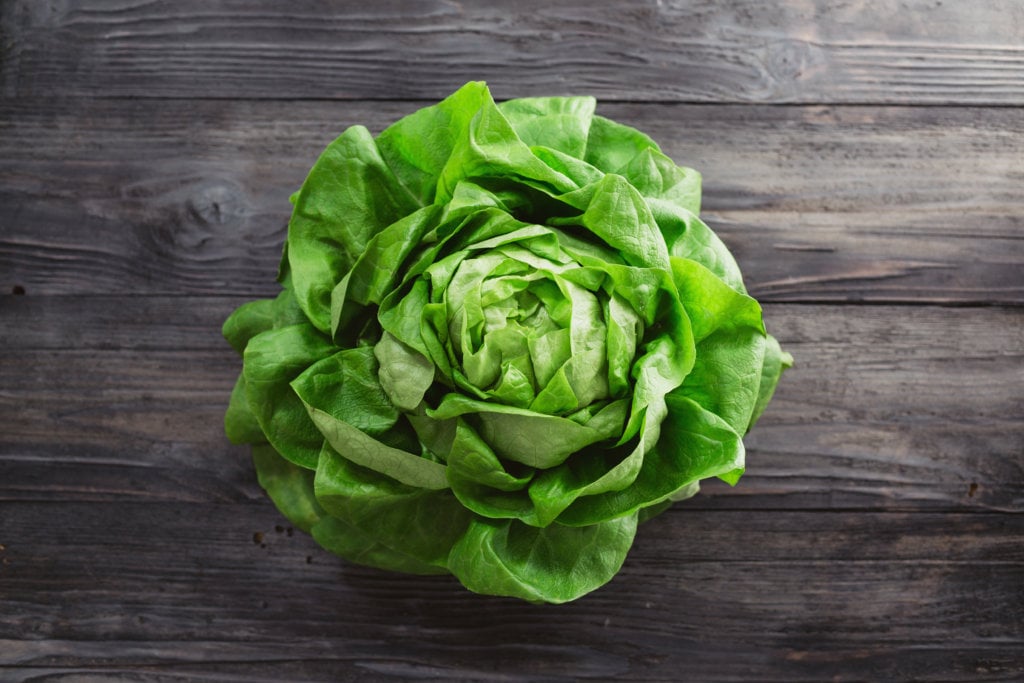
Lettuce is another nutritious plant that is cold hardy and can flourish in warm weather. It is high in fiber and manganese.
You can plant it immediately after your last frost. You can also plant it throughout the summer and early fall. Because it doesn’t take up much space, it is perfect for raised gardens.
- When to Plant: Immediately after last spring frost. A second planting in Early Fall
- How to Grow it: Plant 4-6 inches deep. Plant 6-8 inches apart.
- Watering Needs: Water Immediately after planting and then twice a week for 15 seconds.
- Where to place it: Partial-Sun
- Life Cycle: Annual Plant
- When to Harvest: Slowly pick 30 days after planting
3. Asian Greens
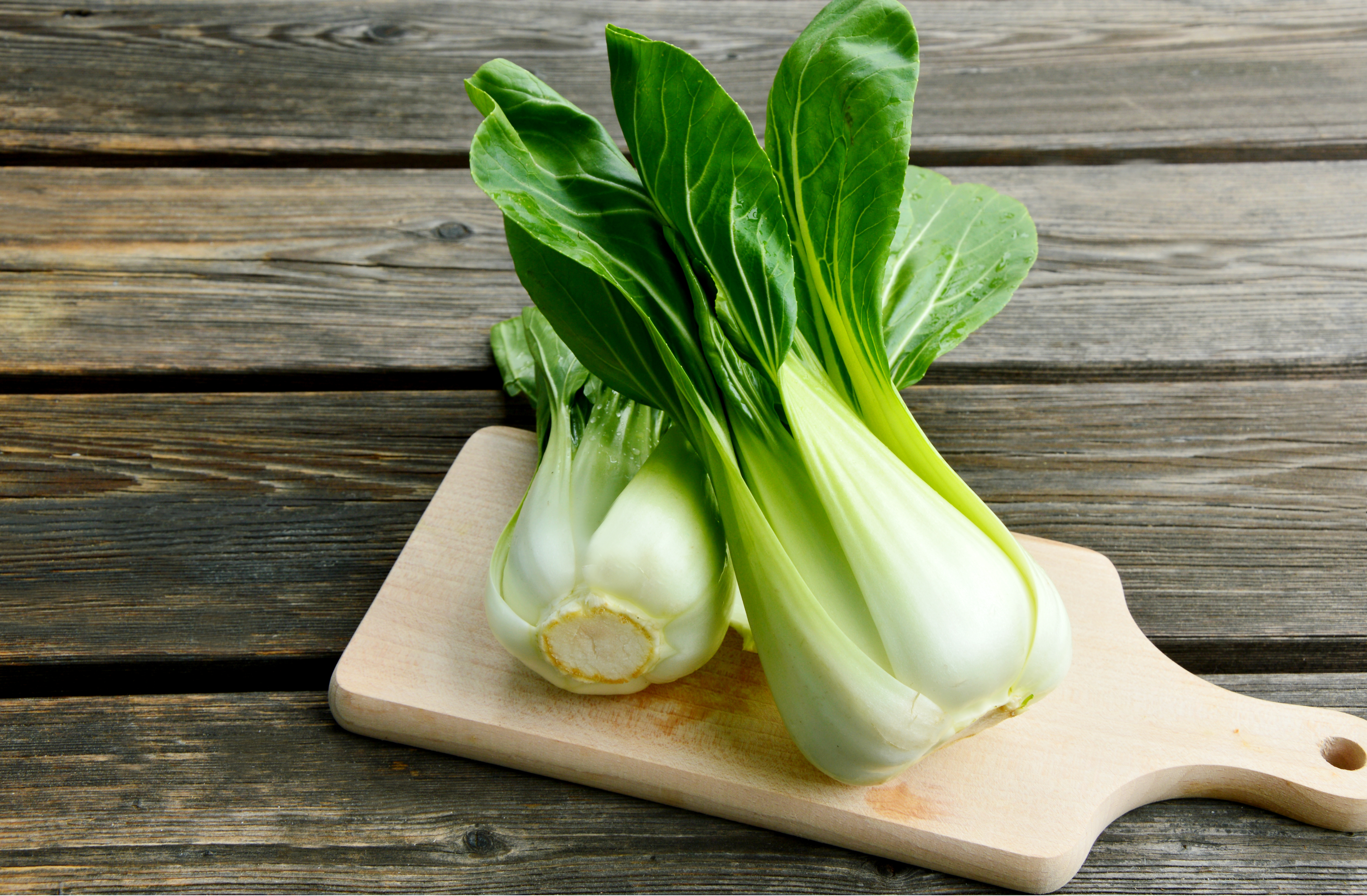
Asian greens are one of the most nutritious foods on this list. And best of all, they can be grown at any time of the year. Asian greens contain vitamins A, B, C, E, and K.
As with lettuce and spinach, Asian greens are great in salad, paired with meat and poultry, and cooked on its own.
- Container Size: 5-gallon window box
- When to Plant: Immediately after last spring frost. A second planting in Early Fall
- How to Grow it: Plant 6 inches deep. Plant 8-10 inches apart.
- Watering Needs: Water Immediately after planting and then twice a week for 15 seconds.
- Where to place it: Partial-Sun
- Life Cycle: Annual Plant
- When to Harvest: Slowly pick 45 days after planting
4. Onions
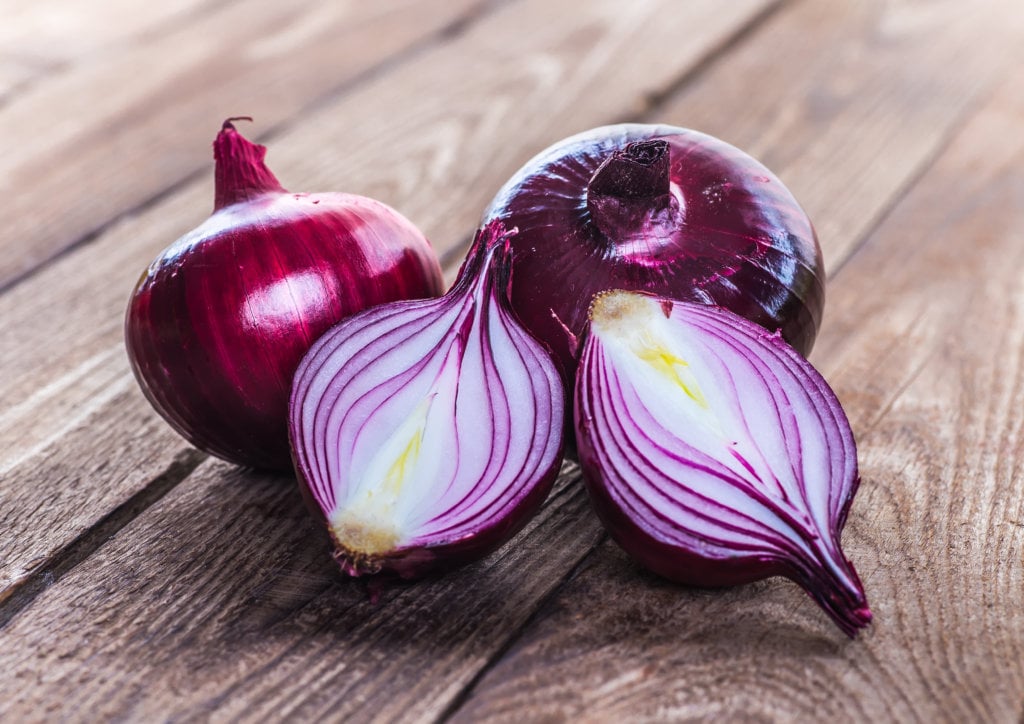
Onions are the perfect vegetable for fiber, folic acid, and vitamin C.
They are a great cold weather vegetable that typically can only be planted in the spring. You can typically plant 50-100 onions in a normal raised garden bed.
- When to Plant: Immediately after last spring frost.
- How to Grow it: Plant 6 inches deep. Plant 6 inches apart.
- Watering Needs: Water Immediately after planting and then once a week for 15 seconds.
- Where to place it: Full-Sun
- Life Cycle: Annual Plant
- When to Harvest: Slowly pick 90 days after planting
5. Green Onions
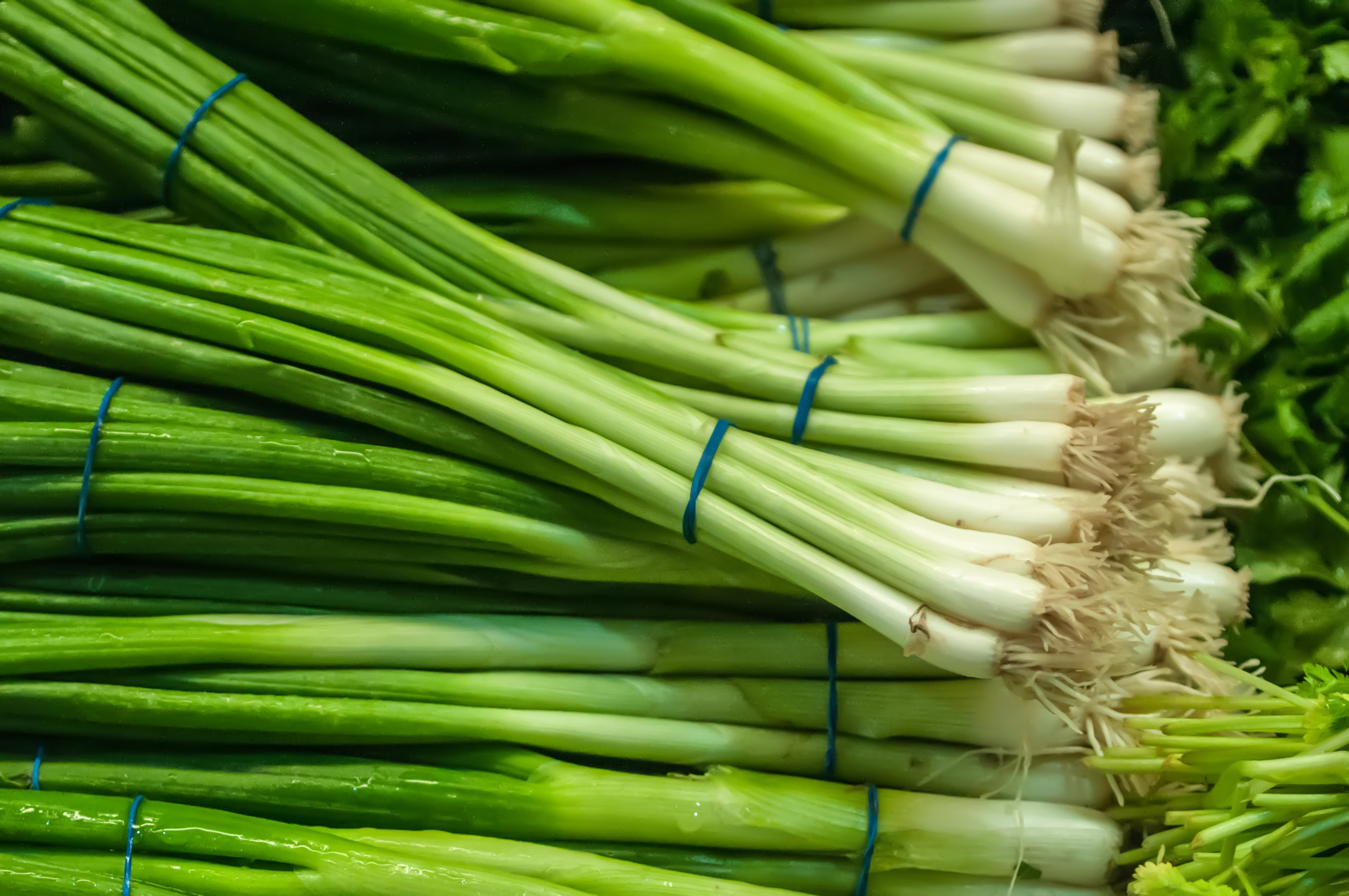
Green Onions are a great source of Vitamins A, C, & K. In addition, it is a good source of Folic acid and Riboflavin.
Green Onions is another cold hardy plant that can be planted immediately after the last spring frost. Because you grow them in raised garden beds they can be harvested almost all year.
- When to Plant: Immediately after last spring frost.
- How to Grow it: Plant 3 inches deep. Plant 6 inches apart.
- Watering Needs: Water Immediately after planting and then once a week for 15 seconds.
- Where to place it: Full-Sun
- Life Cycle: Perennial Plant
- When to Harvest: Slowly pick 90 days after planting
6. Radishes
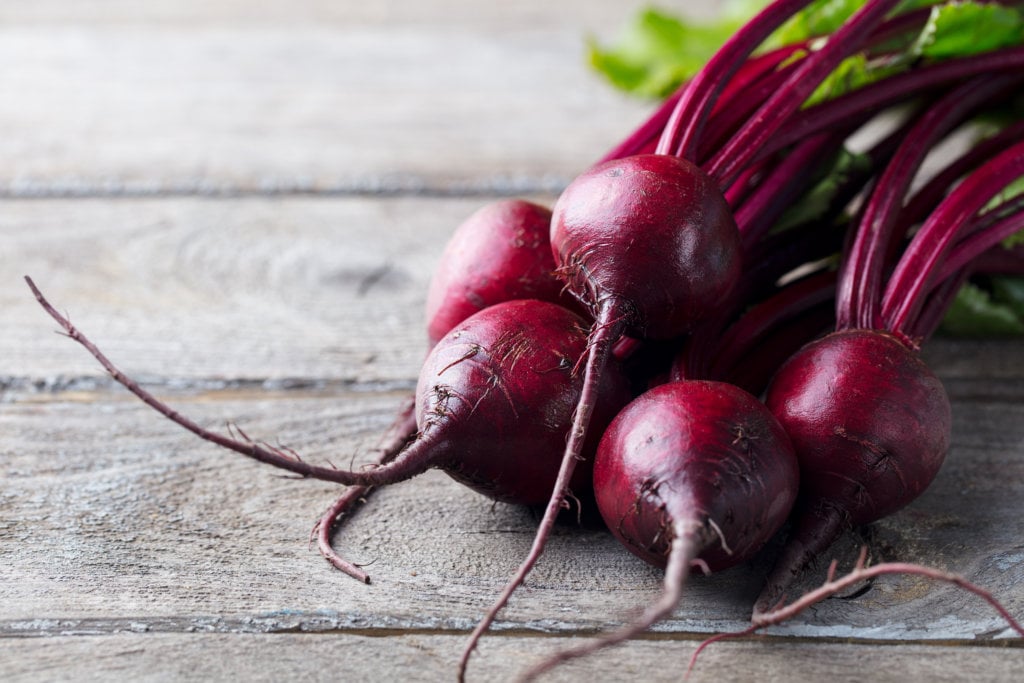
Radishes provide a great source of Vitamin C, Folate, and Potassium. It is one of the many easy vegetables to grow in raised garden beds.
Radishes are another cold hardy vegetable that can be grown in early spring and again in late summer. Whether your raised garden bed is in the ground on above the ground radishes are perfect for them!
- When to Plant: Immediately after last spring frost and again in late summer (mid-July)
- How to Grow it: Plant 6 inches deep. Plant 6 inches apart.
- Watering Needs: Water Immediately after planting and then once a week for 15 seconds.
- Where to place it: Partial-Sun
- Life Cycle: Annual Plant
- When to Harvest: Slowly pick 90 days after planting
7. Asparagus

Asparagus is one of my favorite perennial vegetables to grow in raised garden beds. It is a great source of vitamin A, C, E, and K. It also folate, copper, and iron.
Asparagus can be planted immediately after the last spring frost. And you can leave it in your raised garden all year knowing it will come up every year!
- When to Plant: Immediately after last spring frost
- How to Grow it: Plant 3-4 inches deep. Plant 3-6 inches apart.
- Watering Needs: Water Immediately after planting and then once a week for 15 seconds.
- Where to place it: Partial-Sun
- Life Cycle: Perennial Plant
- When to Harvest: Slowly pick 90 days after planting
8. Artichokes

Artichokes are another great perennial plant that has a strong source of vitamins C, K, and Folate.
This is another vegetable you want to plant after the last spring frost and will come up every year. Because it is a perennial vegetable it is a great option for all raised garden beds.
- When to Plant: Immediately after last spring frost
- How to Grow it: Plant 4-6 inches deep. Plant 6 inches apart.
- Watering Needs: Water Immediately after planting and then twice a week for 15 seconds.
- Where to place it: Partial-Sun
- Life Cycle: Perennial Plant
- When to Harvest: Slowly pick 90 days after planting
9. Peppers
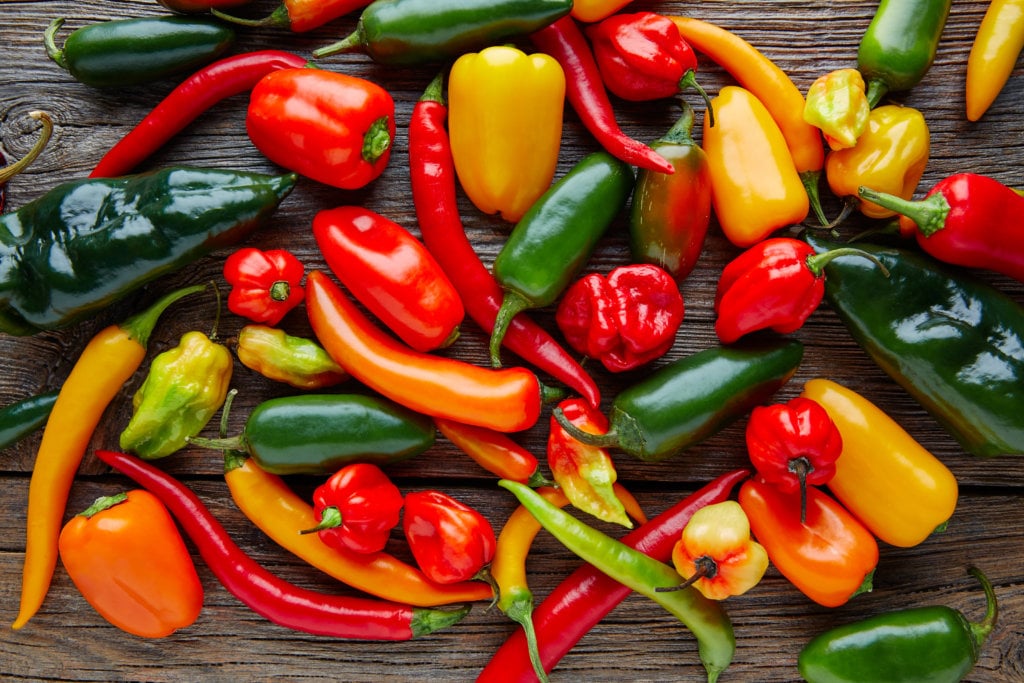
Peppers are my favorite vegetable. They are a great source of iron and vitamin C.
Peppers must be planted one month after your last spring frost. Any sign of frost or cold weather will kill your peppers. Because of raised garden beds you can actually extend the pepper growing season meaning you’ll get more harvest!
- When to Plant: One month after last spring frost
- How to Grow it: Plant 6-8 inches deep. Plant 12-14 inches apart.
- Watering Needs: Water Immediately after planting and then two to three times a week for 15 seconds.
- Where to place it: Full-Sun
- Life Cycle: Annual Plant
- When to Harvest: Slowly pick 90 days after planting
10. Tomatoes

Tomatoes were recently voted the most popular vegetable in the United States. They are rich in vitamin C, potassium, and folate. This is one of the surprisingly easy vegetables to grow in raised garden beds.
Tomatoes should be planted one month after the last spring frost. Any sign of cold weather or frost will kill the plant. Tomatoes are a great option for raised garden beds because you can attach them to different parts of the garden bed to prevent the plant from breaking.
- When to Plant: One month after last spring frost
- How to Grow it: Plant 8-10 inches deep. Plant 14 inches apart.
- Watering Needs: Water Immediately after planting and then two to three times a week for 15 seconds.
- Where to place it: Full-Sun
- Life Cycle: Annual Plant
- When to Harvest: Slowly pick 90 days after planting
11. Chard
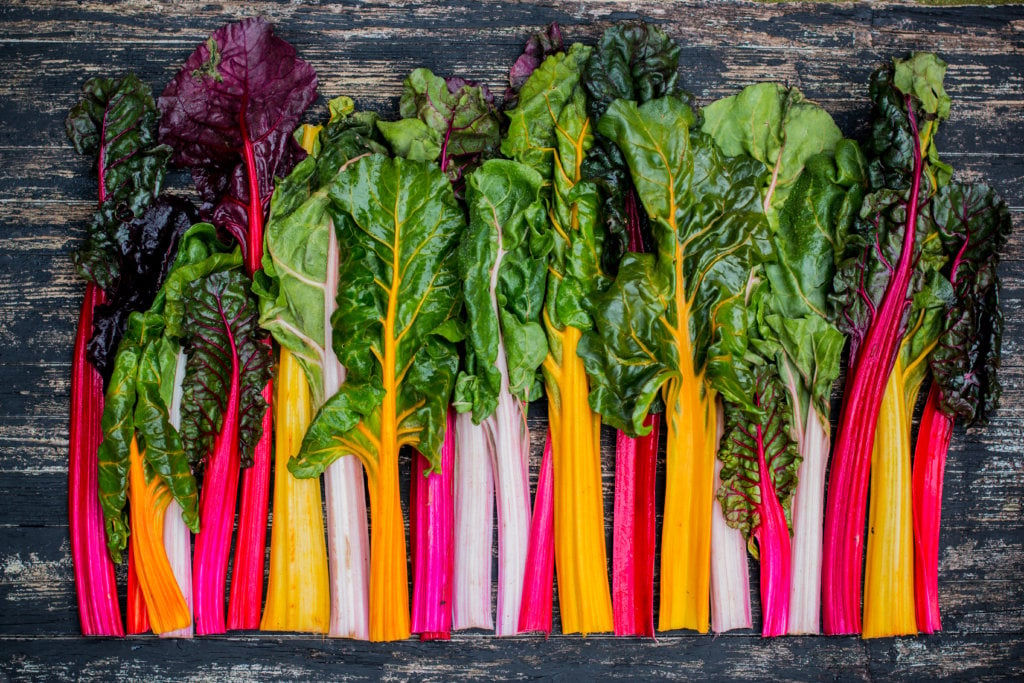
Swiss chard is one of the least known, but most beneficial vegetables. This vegetable is rich in vitamin c, folic acid, iron, and potassium.
Swiss Chard is a cold hardy plant that can be planted in early spring and again in the summer. You can even start your chard seeds in the raised garden bed.
This vegetable is used in fish dishes, salads, and or even eaten raw.
- When to Plant: Immediately after the last frost and in early summer.
- How to Grow it: Plant 4-6 inches deep. Plant 6 inches apart.
- Watering Needs: Water immediately after planting and then two to three times a week for 15 seconds.
- Where to place it: Partial-Sun
- Life Cycle: Annual Plant
- When to Harvest: Slowly pick 60 days after planting
12. Kohlrabi
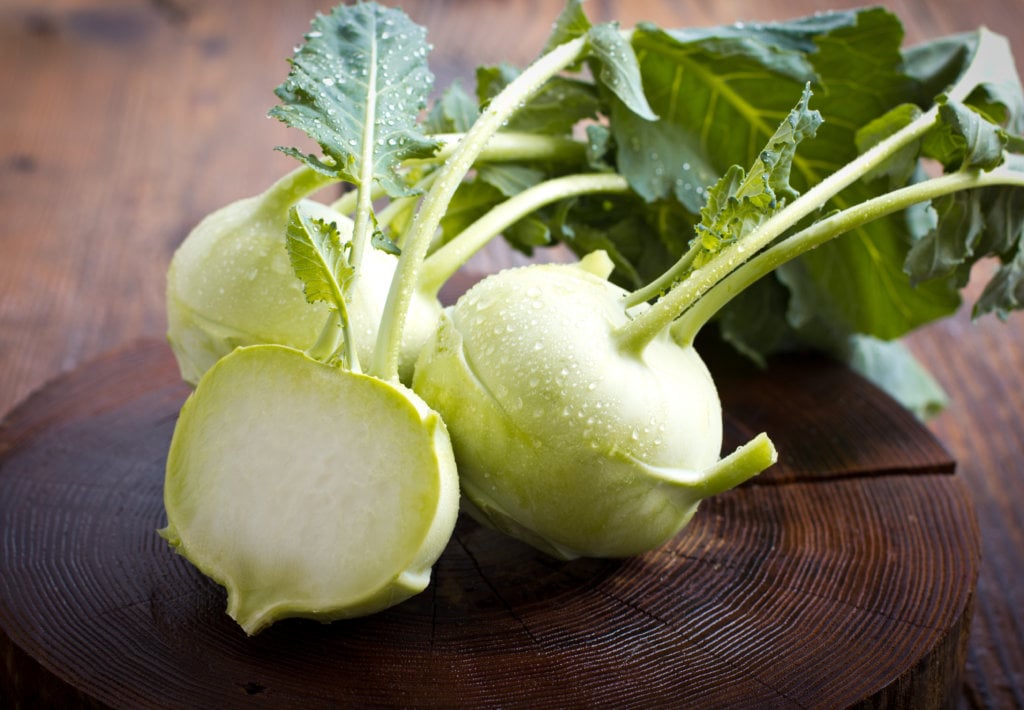
Kohlrabi is becoming an increasingly popular vegetable in the United States. It is a high source of Thiamin, Folate, Magnesium, and Phosphorous.
Kohlrabi can be planted immediately after the last frost and again in early summer. By planting Kohlrabi in a raised garden bed you can get two plantings a year.
- When to Plant: Immediately after the last frost and again in early summer.
- How to Grow it: Plant 6 inches deep. Plant 6-8 inches apart.
- Watering Needs: Water Immediately after planting and then two to three times a week for 15 seconds.
- Where to place it: Partial-Sun
- Life Cycle: Annual Plant
- When to Harvest: Slowly pick 60 days after planting
13. Carrots
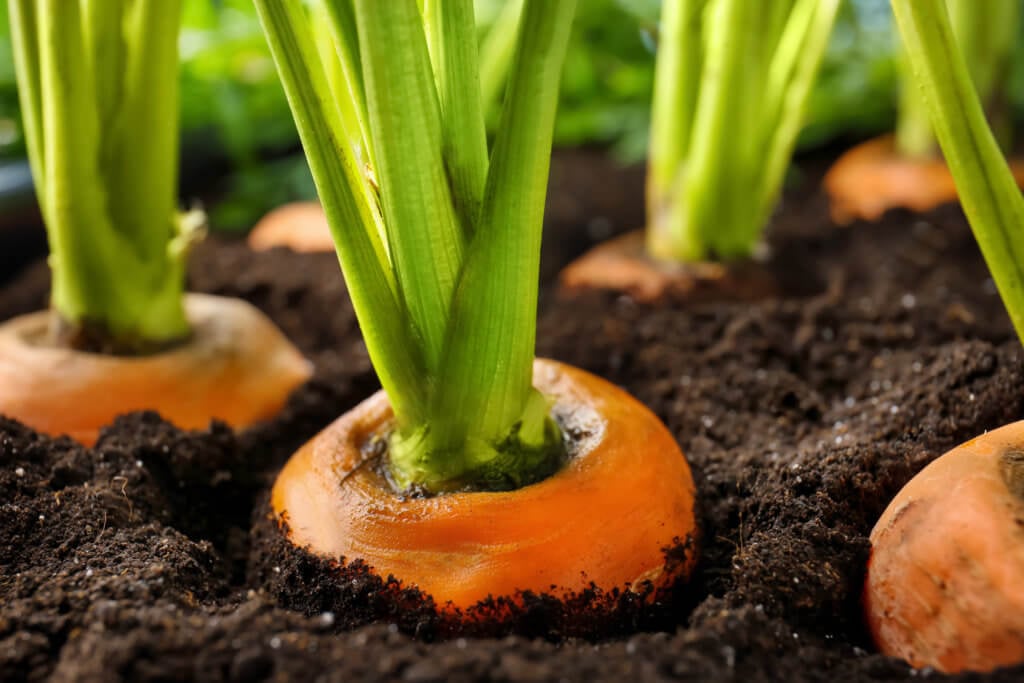
If you follow my instructions carrots are incredibly easy to grow. And they are a great source of vitamin A, K, and potassium.
Typically, you will plant carrots one month after the last spring frost. But in raised garden beds you can plant it a few weeks before the last frost.
- When to Plant: One month after the last frost.
- How to Grow it: Plant 4-6 inches deep. Plant 3-4 inches apart.
- Watering Needs: Water Immediately after planting and then two to three times a week for 15 seconds.
- Where to place it: Full-Sun
- Life Cycle: Annual Plant
- When to Harvest: Slowly pick 100 days after planting
14. Broccoli

Broccoli is another fantastic vegetable for gardeners. It is a great source of protein, thiamin, and vitamin E.
Broccoli is a cold hardy plant that can be planted immediately after the last frost. In a riased garden bed it can even be planted more than once.
- When to Plant: Immediately after the last frost
- How to Grow it: Plant 6-8 inches deep. Plant 12 inches apart.
- Watering Needs: Water Immediately after planting and then two to three times a week for 15 seconds.
- Where to place it: Partial-Sun
- Life Cycle: Annual Plant
- When to Harvest: Slowly pick 90 days after planting
15. Beets
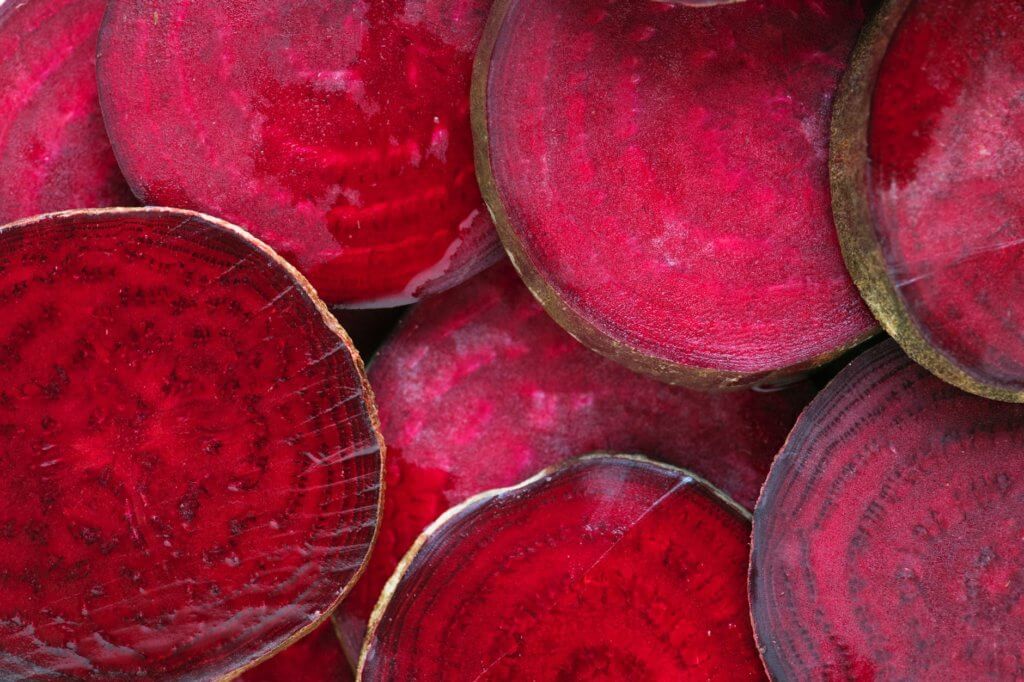
Beets may not be a favored plant among gardeners, but it is high in nutrients. It is an excellent source of fiber, folate, potassium, and vitamin C.
Beets can be planted immediately after the last spring frost and again in early summer. This makes it perfect for raised garden beds.
- When to Plant: Immediately after the last frost
- How to Grow it: Plant 6-8 inches deep. Plant 6 inches apart.
- Watering Needs: Water Immediately after planting and then two to three times a week for 15 seconds.
- Where to place it: Partial-Sun
- Life Cycle: Annual Plant
- When to Harvest: Slowly pick 90 days after planting
16. Kale
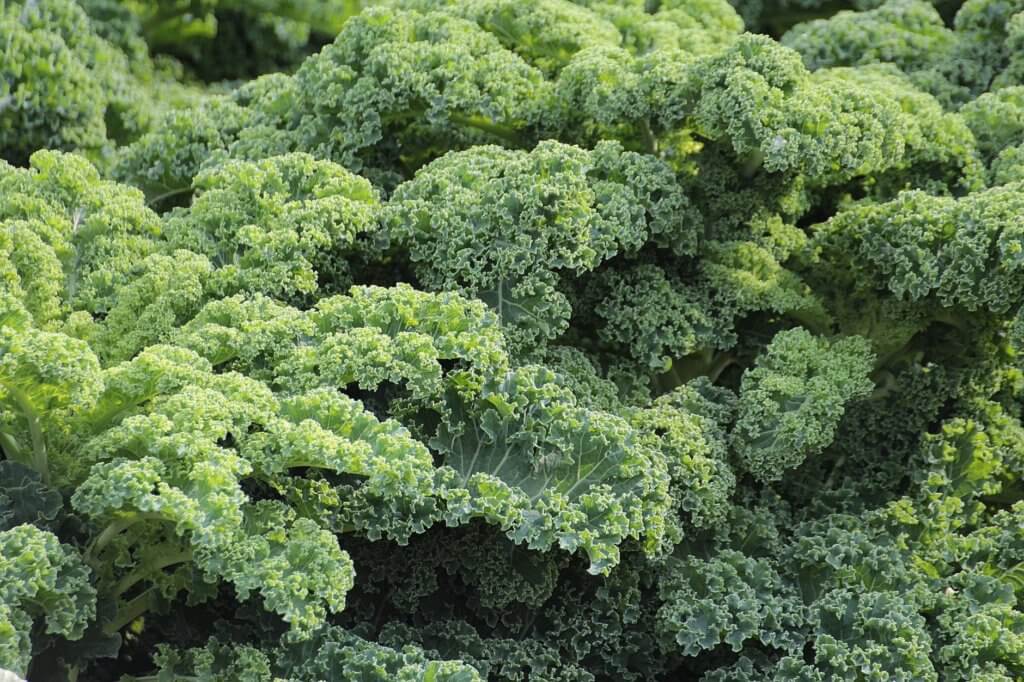
Kale has fastly become one of the most popular vegetables in the world. This vegetable has fiber, protein, almost every vitamin, and iron.
Kale is a cold hardy vegetable that is planted immediately after the last spring frost and again in early summer. In raised garden beds though it is one of the few vegetables that can be grown all year.
- When to Plant: Immediately after the last frost
- How to Grow it: Plant 6 inches deep. Plant 6 inches apart.
- Watering Needs: Water Immediately after planting and then two to three times a week for 15 seconds.
- Where to place it: Partial-Sun
- Life Cycle: Annual Plant
- When to Harvest: Slowly pick 90 days after planting
17. Eggplant

Eggplants are one of the most hearty vegetables on this list. They are a rich source of fiber, potassium, and vitamin C.
They should be planted at least a month after the last spring frost. This is one of the toughest plants to grow in general, but thrive in a raised garden bed.
- When to Plant: One month after the last frost
- How to Grow it: Plant 6-8 inches deep. Plant 12 inches apart.
- Watering Needs: Water Immediately after planting and then two to three times a week for 15 seconds.
- Where to place it: Full-Sun
- Life Cycle: Annual Plant
- When to Harvest: Slowly pick 90 days after planting
18. Green Beans
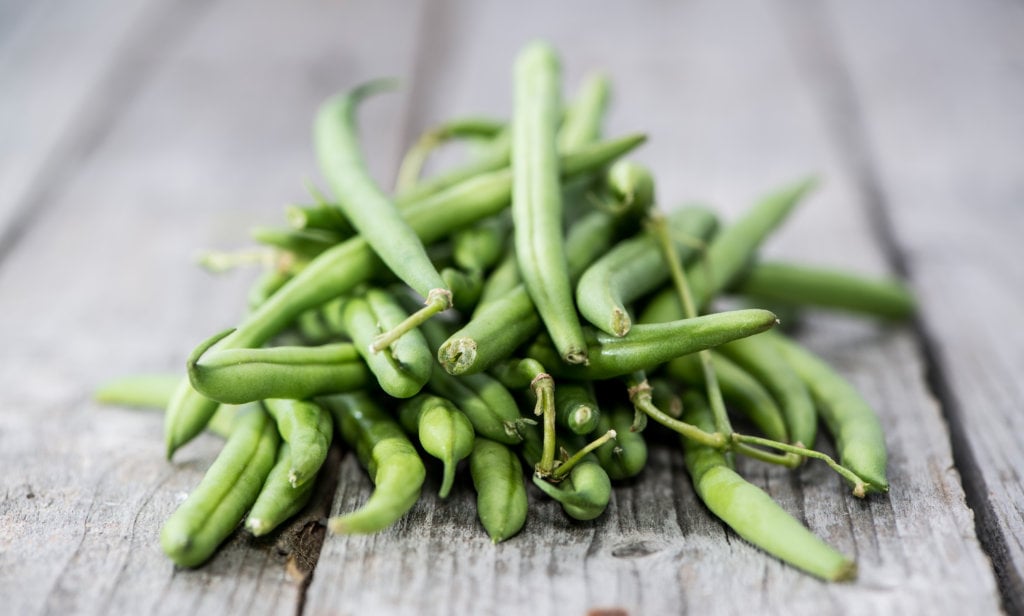
While there are many beans out there, green beans are the best for raised garden beds. Green beans are a high source of folate, fiber, and potassium.
This vegetable should be planted 1 month after the last spring frost and again in early summer. In a raised garden bed it can be grown vertically.
- When to Plant: One month after the last frost and again in early summer
- How to Grow it: Plant 3 inches deep. Plant 3-4 inches apart.
- Watering Needs: Water Immediately after planting and then two to three times a week for 15 seconds.
- Where to place it: Full-Sun
- Life Cycle: Annual Plant
- When to Harvest: Slowly pick 60 days after planting
19. Sweet Peas
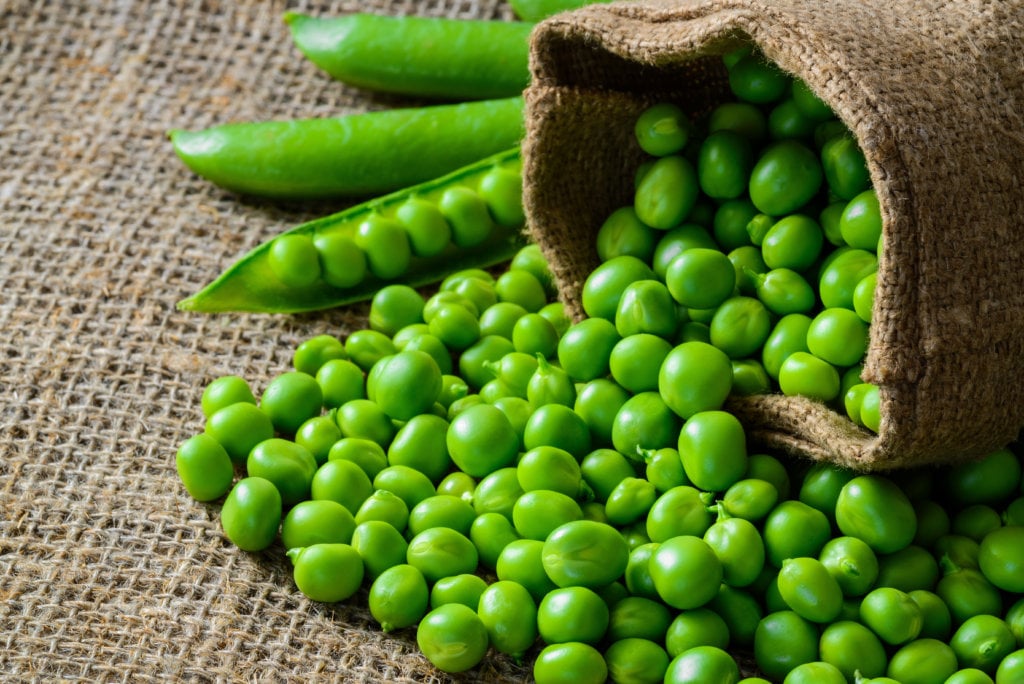
How delicious are sweet peas? They are also very nutritious. These vegetables are a high source of protein, riboflavin, and niacin.
Typically, you plant sweet peas about one month after the last frost and again in early summer. This is also a great plant to grow in your raised garden bed during the late winter or early spring.
- When to Plant: One month after the last frost and again in early summer
- How to Grow it: Plant 3 inches deep. Plant 3-4 inches apart.
- Watering Needs: Water Immediately after planting and then two to three times a week for 15 seconds.
- Where to place it: Full-Sun
- Life Cycle: Annual Plant
- When to Harvest: Slowly pick 60 days after planting
20. Cauliflower
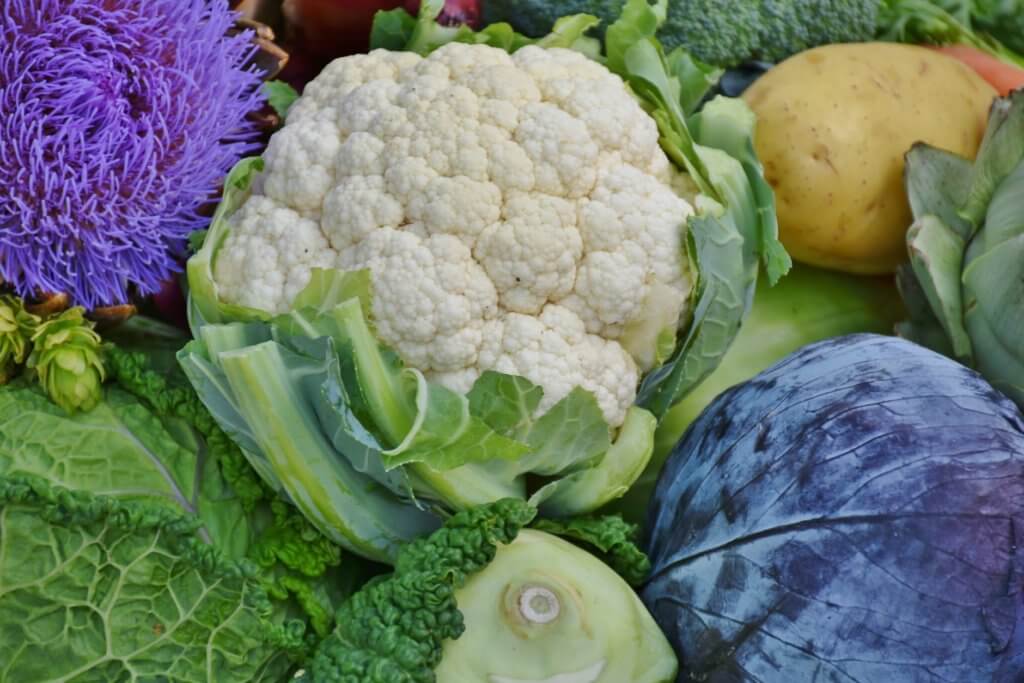
Cauliflower is a very similar plant to broccoli in regards to how you plant, care, and harvest it. It is an excellent source of fiber and multiple B vitamins.
Cauliflower can be planted a little less than one month after the last spring frost. Growing it in a raised garden will protect it against pests and fungus.
- When to Plant: One month after the last frost
- How to Grow it: Plant 6-8 inches deep. Plant 12 inches apart.
- Watering Needs: Water Immediately after planting and then two to three times a week for 15 seconds.
- Where to place it: Partial-Sun
- Life Cycle: Annual Plant
- When to Harvest: Slowly pick 60 days after planting
Bonus – EASY Herbs to Grow in Raised Garden Beds
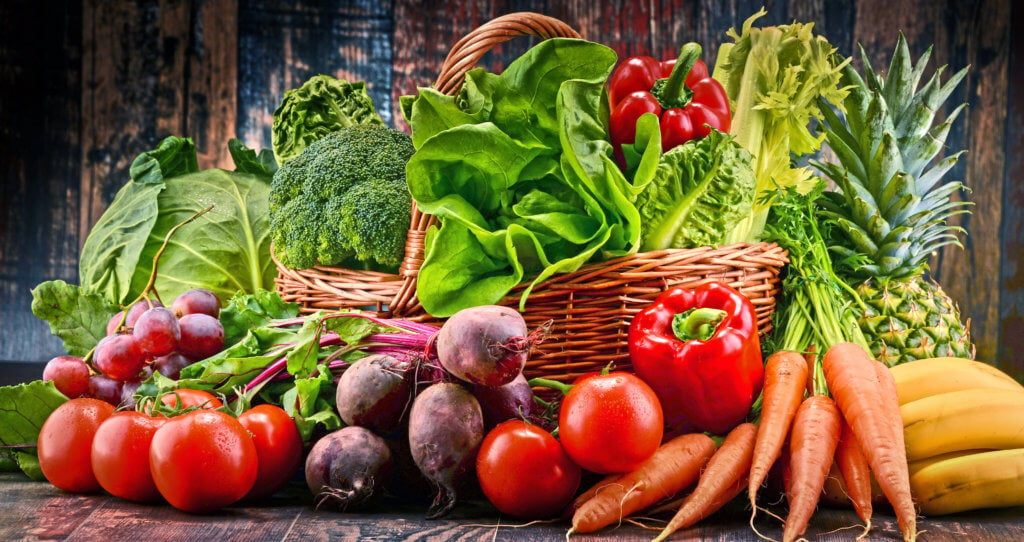
While this article is focused on EASY vegetables to grow in raised garden beds, there are also plenty of herbs I recommend growing in raised garden beds.
Below, is a list of 10 EASY Herbs to Grow in Raised Garden Beds
Bonus – EASY Fruits to Grow in Raised Garden Beds
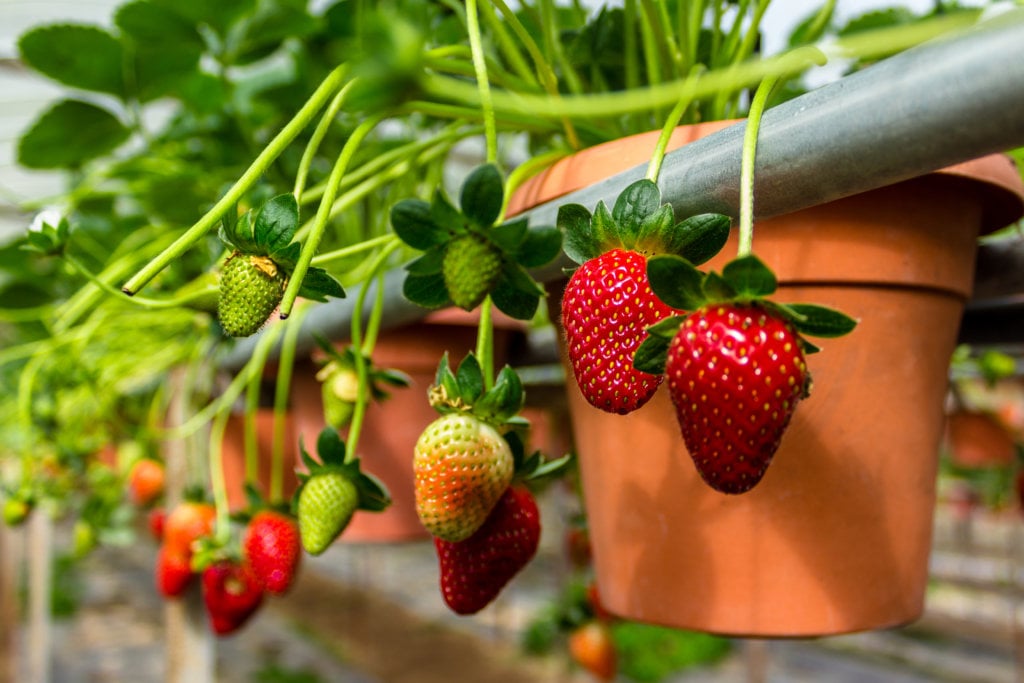
In addition to vegetables and herbs, there are also incredibly EASY fruits to grow in raised garden beds.
Below, is a list of the EASIEST Fruits to Grow in Raised Garden Beds
Frequently Asked Questions
#1. What is Needed to Grow Vegetables in Raised Garden Beds?
A) Purchase the Correct Raised Garden Bed
All you really need to grow your vegetables in raised garden beds is a kit! Find the best raised garden beds for your specific need below:
B) The Right Soil is Essential
Soil is arguably the most important supply needed for growing vegetables in raised garden beds.
If you do not have the right soil your plants may not grow, bear fruit, and can even die.
For any type of vegetable, you plant in a raised garden bed then purchase Potting Soil.
It is that Simple!
I personally use and recommend Miracle-Gro Moisture Control Potting Mix.
This is the perfect mix for beginner gardeners. It is easy to use and it helps prevent over and under-watering.
If you want an organic option then use: Fox Farm Organic Potting Soil
C) Use These 3 Tools
If you want minimal frustration with planting, caring, and harvesting your vegetables from raised garden beds then you’ll need a few tools.
You will need the following:
- Hand Shovel – This is essential for digging a hole for your plant
- Gloves – If you want minimal work and clean-up then use gloves.
- Watering Can – This is a must-have if you don’t want to create a mess while watering your plants.
#2. How do you Grow Vegetables in Raised Garden Beds?
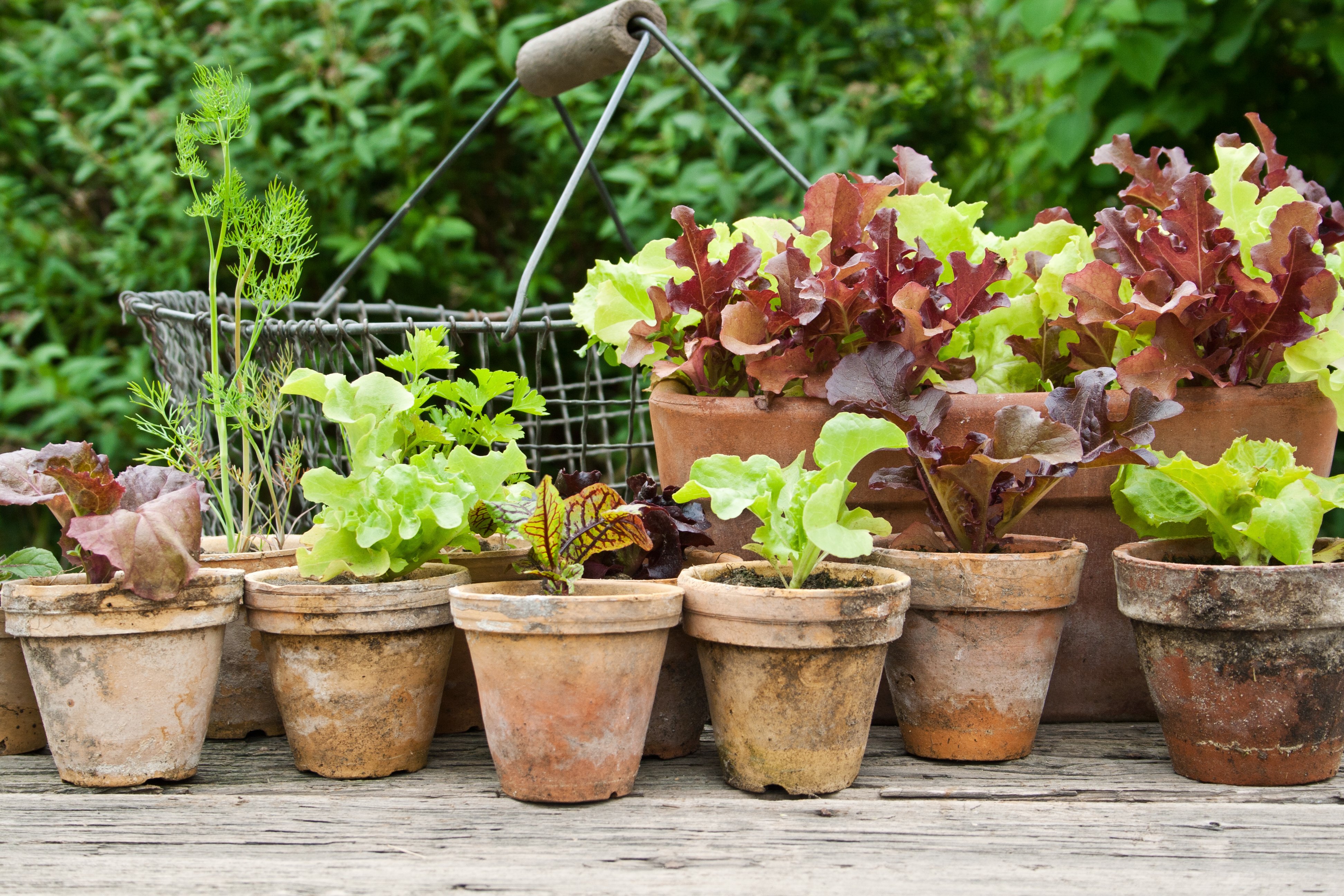
There are 3 Steps to EASILY Growing Vegetables in Raised Garden Beds
Step 1
First, you will want to determine your last spring frost date. The best way to determine this is by using the USDA Plant Hardiness Zone Map for your zip code.
To plant your vegetables, you will first want to take your raised garden bed and place it in an area that either gets direct or partial sunlight. Where you place, it depends on which vegetable you use from the above list.
You will then fill your raised garden bed with your garden soil. Fill it to the top of the raised garden bed.
Step 2
Next, you will dig a hole based on your vegetable. To see how deep and how far apart you should plant your vegetables please see the list above.
You will then cover the base of your plant. The base of your vegetable is where typically a few inches above its root ball. If you have purchased a vegetable to plant from Amazon or a local garden store the root ball will be where the plant meets the “soil mix”.
If you are interested in planting several vegetables in a raised garden bed then I recommend using my pairings below:
- Beans, Peas, and Carrots
- Eggplant, Peas, and Beans
- Tomatoes, Onions, and Green Onions
- Lettuce, Kohlrabi, and Chard
- Spinach, Chard, and Onions
- Peppers, Onion, and Green Onions
Step 3
Immediately after planting your vegetable you will want to add fertilizer. Apply it per the instructions on the back of the fertilizer package.
For a fertilizer that will work on all your vegetables then I recommend Miracle-Gro All Purpose Plant Fertilizer.
You will then water your plant for about 10-15 seconds.
#3. How Do You Care for Vegetables in Raised Garden Beds?
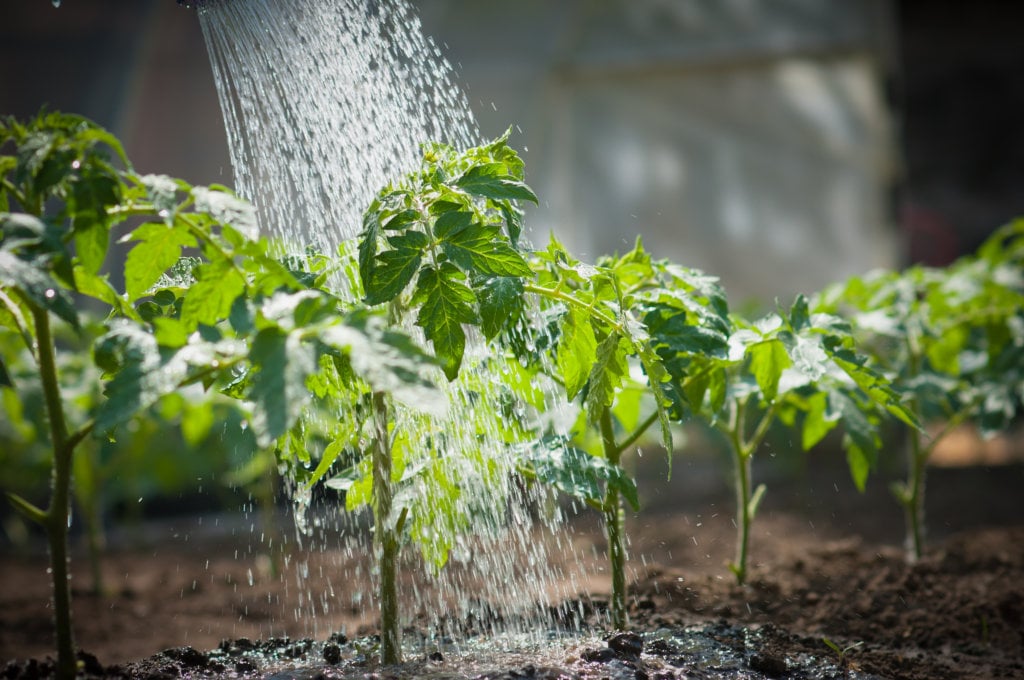
1 EASY Step to Caring for Your Vegetables in Raised Garden Beds
If you want to care for your vegetables in the easiest way possible then there is only one thing you need to do.
Depending on the vegetable you plant you will want to water your plant one to two times a week. Spend about 10-15 seconds watering each vegetable plant.
#4. How do You Harvest Vegetables?
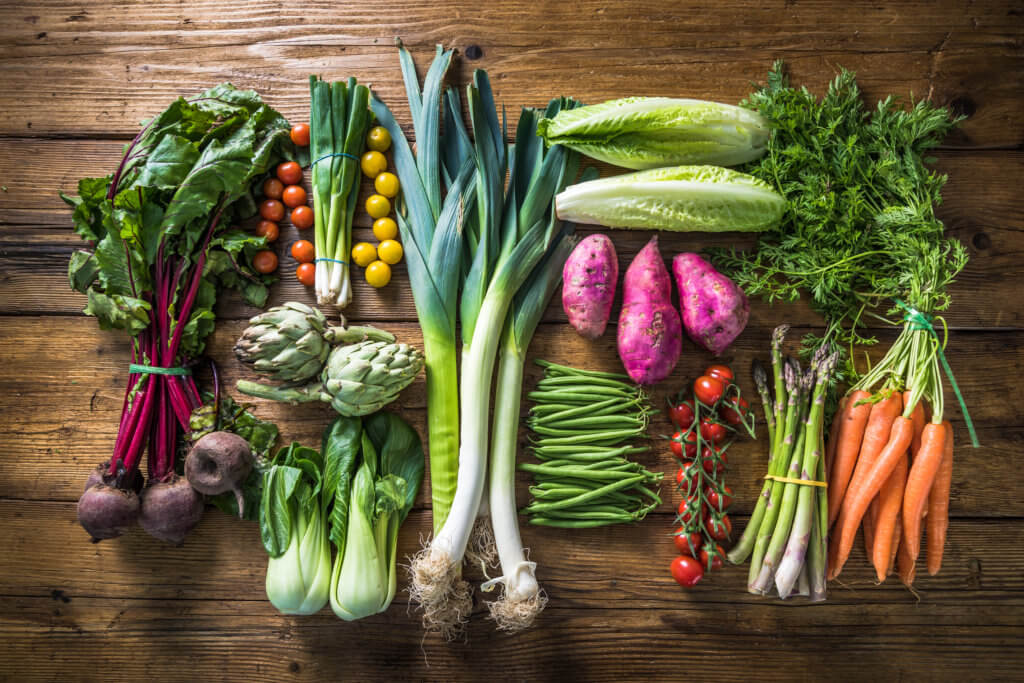
1 EASY Step to Harvesting Your Vegetables
If you thought caring for your vegetables in raised garden beds was easy then you will be amazed how easy it is to harvest your vegetables.
All you need to do is pick your vegetables when it is ready.
Honestly, it is okay to pick your harvest a little early or a little late. And if you are still unsure use my harvest time in the above section and you cannot go wrong.
All you have to do to harvest your crop is pick your vegetable from where it meets the branch it is growing on. If it is a leafy vegetable just pinch and pull. If it is a vegetable like a pepper or a tomato twist it from where the vegetable meets the branch.
Remember to harvest early and often. This will encourage new growth. This will also allow you to get a second planting in for certain vegetables.
When you are finished harvesting your plant you can pull it and compost it. Please review my composting article for more information:
Winter Composting (10 PROVEN Tips)
What to Compost: 9 Best Foods to Compost (and 10 You Shouldn’t)